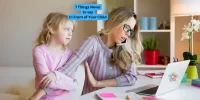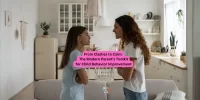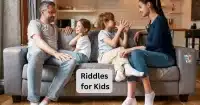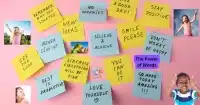by Karen Sibal
Recent statistics indicate that about 90% of household injuries to children are predictable and preventable. Here’s a checklist that parents and caregivers can keep handy to help ensure your child’s environment is safe.
- Put young babies to sleep on their backs.
- Do not put babies to sleep on adult beds or on very soft bedding.
- Always raise crib side to the “up” position when your baby (even a tiny infant) is in it.
- Never tie toys to a crib or playpen – your baby could strangle on the string.
- Never put a pacifier on a string around your baby’s neck.
- Consider the use of monitors so you can hear your baby’s cry.
Explore your home through your child’s eyes. Crawl through it on your hands and knees to find the potential hazards.
- Install childproof latches on all cabinets and drawers that contain dangerous items.
- Fill empty electrical outlets with plastic plugs designed to keep curious fingers and other objects out.
- Remove unused extension cords.
- Put a large sofa or chair in front of electrical outlets. Use W3 Electric services if you are in need of repair or are wanting to upgrade your electrical system.
- Store small tables or furnishings that have sharp edges or are unstable until your child is older.
- Tuck the cords to blinds and shades up high, out of children’s reach.
- Install a proper screen on the fireplace.
- Put a gate on the stairway to avoid falls.
- Put small, fragile tabletop items out of your child’s reach.
- Check toys for sharp edges and small, loose or broken pieces.
- Check the labels on toys to make sure they are non-toxic and age appropriate.
- Put dangerous household substances such as alcohol, detergent, cleaning fluid, razor blades, matches and medicine out of reach or in locked cabinets or drawers.
- Keep plastic bags, purses, and small objects such as buttons, nuts, hard candy or money out of reach.
- Call a medical professional if you suspect your child has swallowed something poisonous or harmful.
- Sleep with bedroom doors closed to keep smoke out of the rooms in case of fire.
- Stay with your young child when he/she uses the bathroom.
- Make sure toys, furniture and walls are finished with lead-free paint.
- Teach the word “hot” as early as possible. Keep your child away from the hot oven, iron, vent, fireplace, wood stove, barbecue, cigarettes, cigarette lighter and hot drinks.
- Turn pot handles inward when cooking.
- Do not let appliance cords hang down over the counter or stove.
- Do not drape a tablecloth off the sides of the table — it makes it an easy target for a small child to grab hold and pull it, potentially causing things to fall of the table and hurt the child.
- If your child suffers an injury from a slip and fall accident at a public area like in a park or in a playground, then you might want to ask help from a legal professional for this. It also better to contact an expert lawyer specifically an effective indianapolis injury attorney for assistance in getting the right compensation or claim.
- Never leave a child alone in the car under any circumstances.
- Many jurisdictions have updated their seat belt laws for children. Make sure you know the new child restraint regulations.
- Always use an infant or child car seat that is correct for your child’s weight. Always follow the manufacturer’s recommendations for installing them and if you’re still unsure, contact your local police department for help.
- Use a booster seat that is recommended for your older child’s weight.
- Children under 12 should ride in the back seat. Air bags can harm or kill children when they inflate.
- Do not let your child sit on someone’s lap or share a seatbelt while travelling in the car.
References:
1. Checklist for Child Safety, (2004) Peel Children’s Aid Society, Ontario , www.peelcas.org.
Biography
Karen Sibal is a freelance writer, researcher and communications consultant. She is the owner of Sibal Writing and Consulting, a firm that specializes in public policy research and effective communications and web solutions for all types of organizations. Over the past 15 years, Karen has done work for local and provincial governments and several not-for-profit organizations. Karen has written extensively on children’s issues and has recently helped with launching an association for mothers and children in her community. She is a member of the Halton-Peel Communications Association and has also served as the managing editor of a government child welfare journal. Karen is currently authoring a children’s book series for preschool children and keeps busy with various community projects.
No part of this article may be copied or reproduced in any form without the express permission of More4Kids Inc © 2005
Posting Search Tags: Children Child Safety Child Safety Home Safety











1 Comment